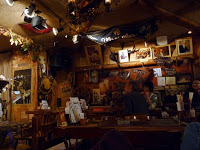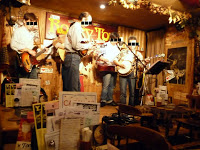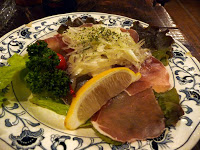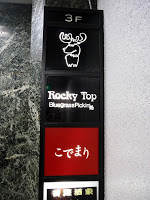 Japan is a strange and wonderful place. Hidden subcultures about – usually these only peek out for a moment when some intrepid foreign journalist comes to town and writes a story about a colorful character in one of them. You read it, you think it’s interesting, and you forget about it.
Japan is a strange and wonderful place. Hidden subcultures about – usually these only peek out for a moment when some intrepid foreign journalist comes to town and writes a story about a colorful character in one of them. You read it, you think it’s interesting, and you forget about it.
I started playing music when I was about 10, and my first instrument was the banjo. As a result, the first couple years were spent largely on bluegrass, at least when I wasn’t in my friend’s attic bashing out crude electric guitar-and-drums recordings of homemade songs to a Radio Shack cassette recorder. My family used to go to bluegrass festivals for vacations sometimes. And since I moved to Japan, my Dad has consistently said I should try to find the hidden Japanese bluegrass scene. Recently he talked to someone who said bluegrass is ‘big in Japan’. Aside from the laugh-out-loud cliche of something being BIJ, it got me thinking. And thinking got me wondering, and wondering got me to Rocky Top on Saturday night. They do have food, so I’m at least partly justified in writing this.
For a 25+ nights each month, this one-room Western-style bar around the corner from Ferragamo in Ginza hosts various bands, most of them bluegrass. If you don’t know what bluegrass is, perhaps I can best explain it by saying “music that makes you want to say Yee Haw! in an ironic way” and leave it at that. Banjos are featured. Like most types of music, it sounds monotonous unless you understand the genre and can differentiate what’s good, bad and different.
On this particular night, I walked in just in time to see a completely typical bluegrass band hard at work on the bandstand – guitar, banjo, mandolin, dobro and bass (if you don’t know these instruments, how about doing a little research, OK?), three-part harmonies, the works. The only things that were different were from the necks up, because of course they were all Japanese. I like to think I’m immune to quirkiness in Japan and have moved on to simple appreciation, but I have to tell you the first few minutes were fully quirky for me.
There being less than a dozen customers, it was pretty easy to get acquainted with the band between sets (and indeed while the other band played – which was a Dawg-style 6-piece with gypsy overtones and an old guy playing bongos like a banshee. Seriously, a strange and wonderful place.). The most striking things were that after 2 minutes of conversation, when I allowed as I liked playing dobro but didn’t have on in Japan, the dobro player immediately said “Come back on the 13th, I’ll bring one to lend you”, and that the banjo player, hearing that that was my main instrument, unceremoniously dropped his 1934 Gibson into my lap and left it there for the better part of 20 minutes. Friendly people, fun times. I look forward to hanging out there more and hopefully doing a little pickin’ with them.
The food’s not much, but at least you can eat. Here’s nama ham with a bunch of softened raw onions; it was oddly refreshing and decent.
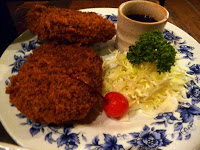 And for further sustenance, some croquettes. If you don’t know Japanese croquettes, they’re basically deep-fried mashed potatoes. There’s usually a bit of ground meat mixed into the potatoes, or sometimes it’s mainly meat and called a ‘mince katsu’. Including a maraschino cherry is a strange and beautiful touch. And I didn’t eat it.
And for further sustenance, some croquettes. If you don’t know Japanese croquettes, they’re basically deep-fried mashed potatoes. There’s usually a bit of ground meat mixed into the potatoes, or sometimes it’s mainly meat and called a ‘mince katsu’. Including a maraschino cherry is a strange and beautiful touch. And I didn’t eat it.
